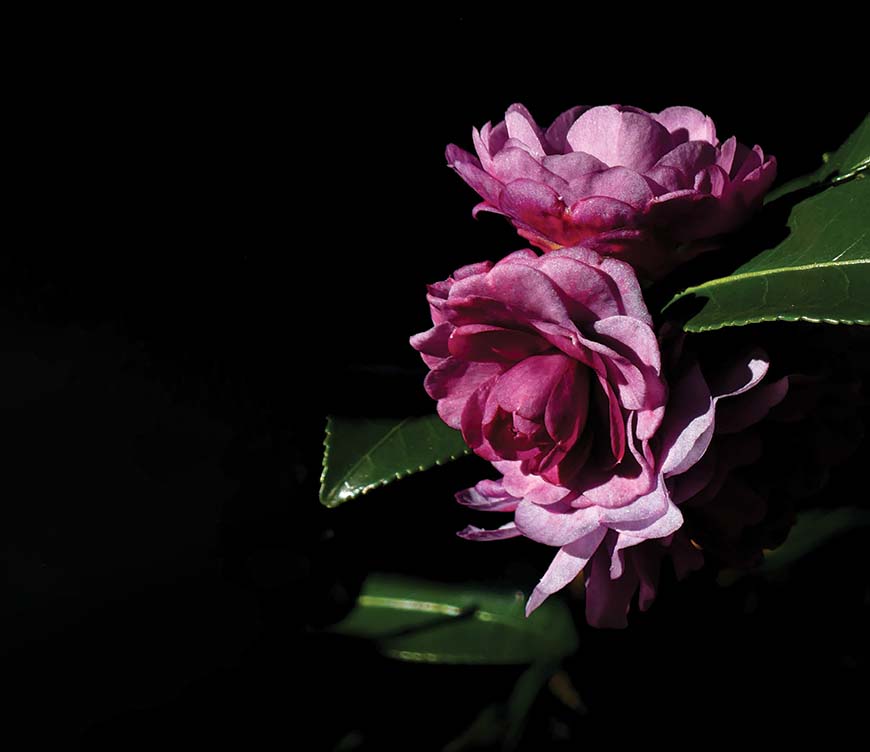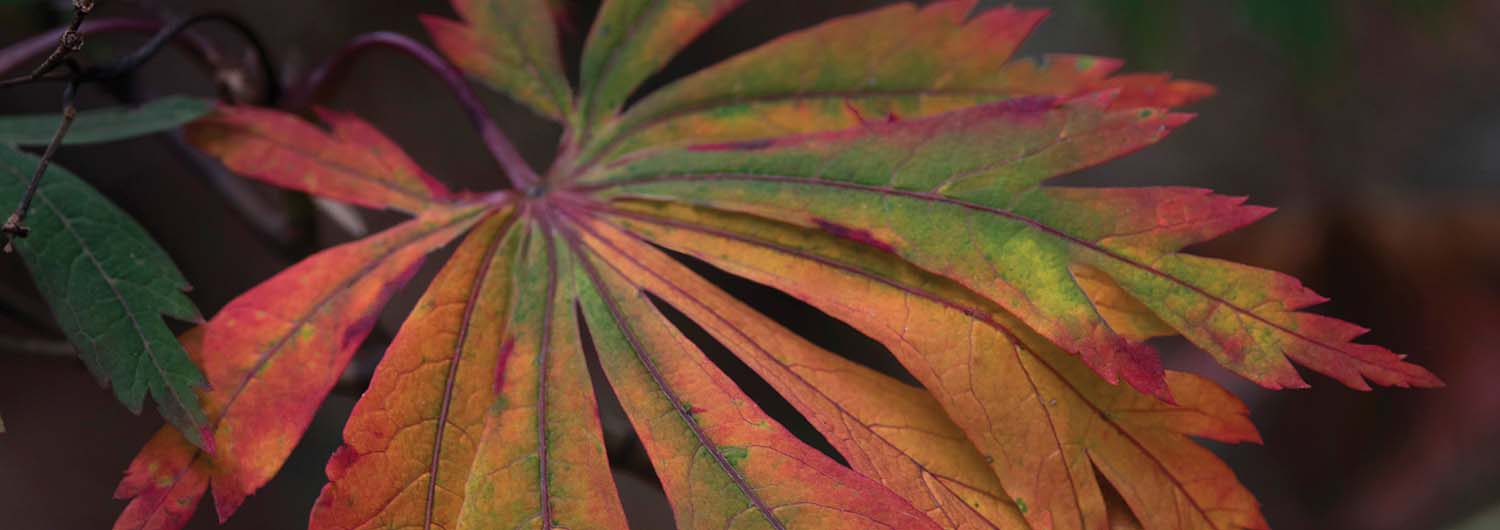Friends of the JC Raulston Arboretum Newsletter
Fall 2021 – Vol. 24, No. 2
Director's Letter
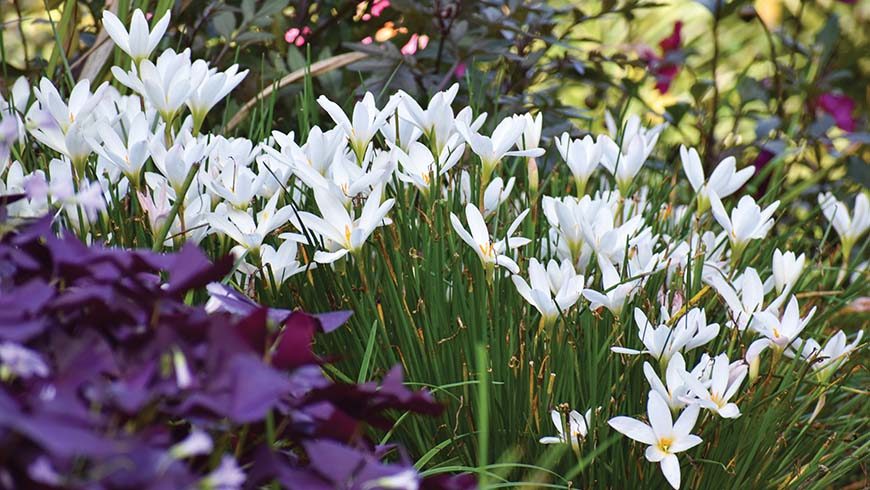
Greetings from the JC Raulston Arboretum
By Mark Weathington, Director
This year marks the 25th anniversary of J. C. Raulston's untimely passing. We took that opportunity to think a bit about his legacy. Our original plan for this newsletter was to include articles about how we were continuing that legacy. We reached out to folks who were J. C.'s colleagues, students, and friends to hear their thoughts on how he inspired them. The same words from them kept popping up—generous, passionate, knowledgeable, dedicated. He truly did inspire a generation to "Plan—and plant a better world."
As staff brainstormed ideas for the newsletter, we realized that J. C.'s ethos was so deeply ingrained in us that we didn't need a special issue to illustrate it. Read through these pages or back through any of our past newsletters and you will see J. C. on each and every page. Every time we share our passion for plants, whether it is with another plantsperson or a young summer camper, we are furthering J. C.'s legacy. Every plant we distribute honors his memory.
We can't know where he would have taken the Arboretum had he remained with us, but we do know his prescient vision still inspires us to face the future with the idea that we can make the world a better place. With the recent United Nations Climate Change Report painting a stark picture of where we are headed, now is the time to plan—and implement real change. Plants and gardens are a large part of the answer. The JCRA is dedicated to exploring and conserving plant genetics, developing and introducing plants for modern needs, instilling a sense of wonder and appreciation of the natural world in the general public, and supporting students and our partners in the green industries as they help make the world a better place.
Horticulture
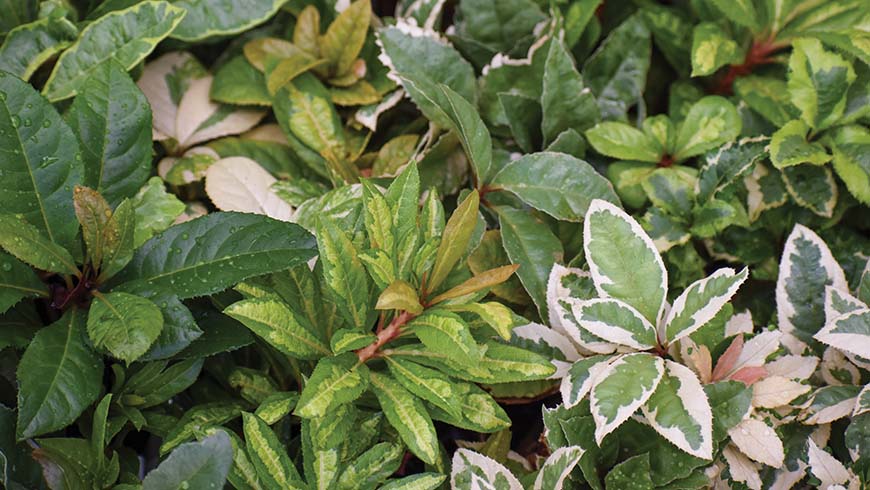
Awesome Ardisia
By Mark Weathington, Director
Like so many other plants, I first learned about the diversity of Ardisia from the JC Raulston Arboretum during a visit in the mid-1990s, well before I was named assistant director. I had seen the ground-covering Ardisia japonica and a few of its variegated cultivars before, but J. C. had amassed a small collection from Barry Yinger. I was intrigued by the idea of a well-behaved, shade-loving, evergreen ground cover to replace English ivy and the plant became a favorite of mine. Nearly 30 years later and we have come full circle. The JCRA has been collecting Ardisia japonica actively in recent years and now boasts about 50 cultivars, the largest collection in the United States for certain.
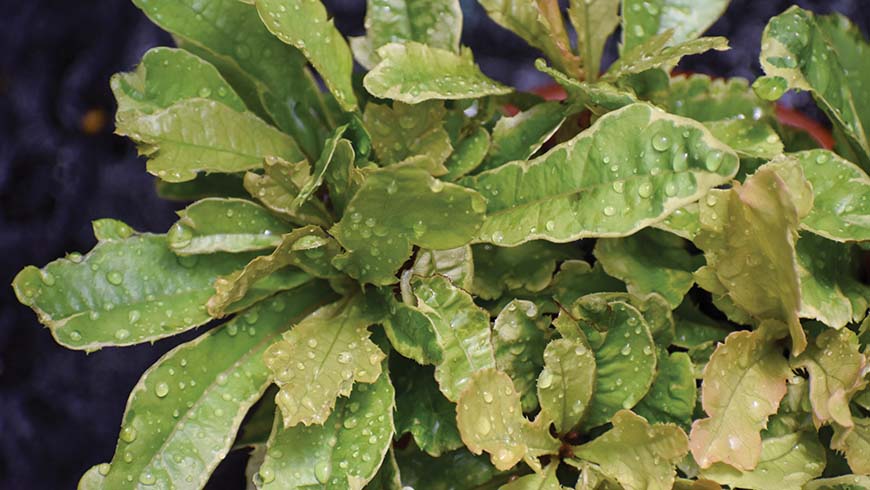
Ardisia, often known as coralberry or marlberry, is quite a cosmopolitan genus, ranging from the Americas to Asia and down to Australia and the Pacific Islands. Typically woody, often growing as a tree or shrub, most of the 700 or so species are too tender to grow outdoors except in the tropics and subtropics. It is a member of the Primulaceae family and is characterized by clusters of small, bell-shaped, pink or white flowers whose stamens are joined at the base, forming a small tube.
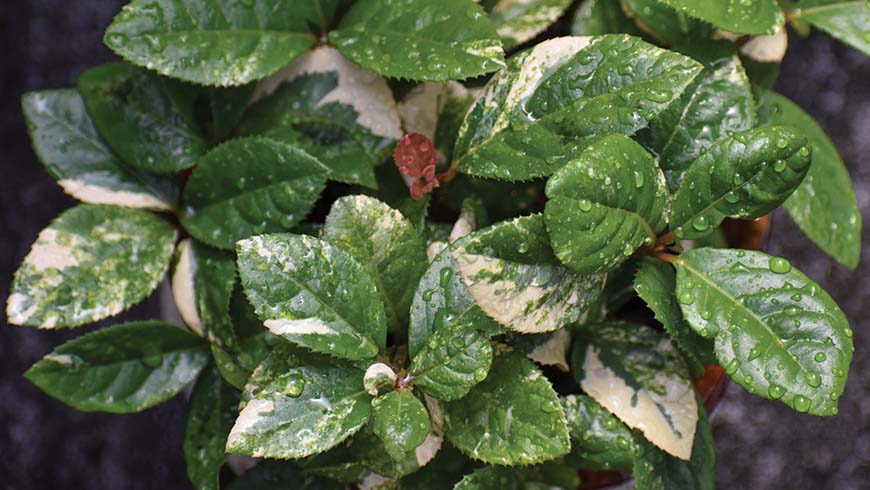
Japanese marlberry was first named in the late 1700s after being collected from garden plants in Japan where it has a long history of cultivation. It is one of the 50 fundamental herbs of Chinese medicine as well. Japanese marlberry makes a low, evergreen, ground cover which spreads to form dense patches via wiry, underground rhizomes. Small, pale pink flowers are held just below the leaves and give rise to relatively large, bright red fruits. It prefers a well-drained, rich soil in shade. The many variegated selections are best in zone 8 gardens, dying back to the ground in colder zone 7 winters. The small-leafed 'Chirimen' has been the most reliably hardy form. In Japan, the selections are grown as treasured houseplants and deserve wider use in that way in the West.
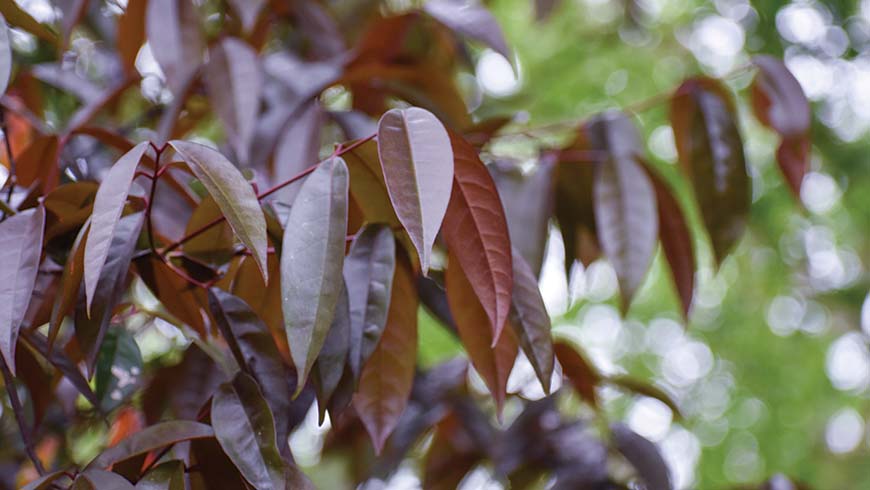
Recent JCRA Introductions
By Douglas Ruhren, Gardens Manager
It was always J. C. Raulston's goal to grow just about any and every plant he could get his hands on for the purpose of determining if it would be suitable for gardens and landscapes in the Southeast. And, if a particular plant proved to thrive in this area, to promote it to the green industry so that nurseries would grow it, landscape and garden designers could specify it, and home gardeners could add it to their gardens.
The JC Raulston Arboretum has continued to follow this same path ever since the death of J. C. Raulston in 1996.
Sometimes, a particular individual plant stands out from the rest of its species and deserves to be distinguished by a cultivar name. The word "cultivar" is a contraction of "cultivated variety" and is distinguished from a botanical variety in that it usually arose in a cultivated situation or is maintained only in cultivation. A cultivar (abbreviated cv.) is also a clone, each one an identical replicate of the original plant.
J. C. named quite a few cultivars. Some notable examples are two cultivars of Lagerstroemia fauriei, the Japanese crepe myrtles 'Fantasy' with its very tall, upright growth habit and 'Townhouse' with its amazingly dark, chocolate brown bark. One of many plants J. C. brought back from a trip to South Korea was a Styrax japonica (Japanese snowbell) that was larger in all parts and has a more narrowly upright growth habit. It bears the name suggested by Bryce Lane: 'Emerald Pagoda'. J. C. also named the one-of-a-kind weeping form of the local native winged elm, Ulmus alata 'Lace Parasol' when the original plant was transplanted from woods in Orange County, North Carolina, to the JCRA.
The JCRA honors J. C.'s legacy by continuing to introduce amazing new cultivars as shown by the following examples:
Fagus grandifolia 'White Lightning' (weeping American beech) has an origin story similar to 'Lace Parasol' elm in that it too was a unique individual found in the woods and transplanted to the JCRA. It was originally thought to be not only strongly weeping but also a dwarf, yet its very strong growth in recent years suggests it might in time grow quite large, even if it remains vertically challenged. Large or small, it will make a dramatic specimen with its strongly pendant stems and silvery winter bark.
Viburnum obovatum 'Raulston Hardy' is noted for being more winter hardy (zone 6) than other selections of this viburnum native to South Carolina, Georgia, Florida, and Alabama. It is also quite compact: 2' to 3' tall by 3' to 4' wide compared to the 12' or taller of the wild type. It is one of the plants in the JCRA Choice Plants program, a program that benefits both the JCRA and Johnson County Nurseries (and others), while also promoting great plants.
Another plant in the JCRA Choice Plants program is the Chinese redbud (Cercis chinensis) cultivar 'Kay's Early Hope'. It is notable for its very early flowering and the more shrub-like habit of this species.
Mark Weathington named a selection of Acer laevigatum 'Hóng Lóng' (red dragon, photograph above) for its bright red new growth. This Asian maple is evergreen and has very un-maple-like simple leaves which are very much willow-oak leaves. The bark of its young twigs is a deep purple-red.

The bark of the JCRA selection of Wilson's dogwood, Cornus wilsoniana 'White Jade' (photograph above), is pure white when it is new. Other examples of this species in the JCRA are not as notable. It is a medium sized deciduous tree. It is showy in bloom even though it lacks the showy bracts ("petals") of our native Cornus florida and its Asian cousins, C. kousa, C. capitata and other close relatives.
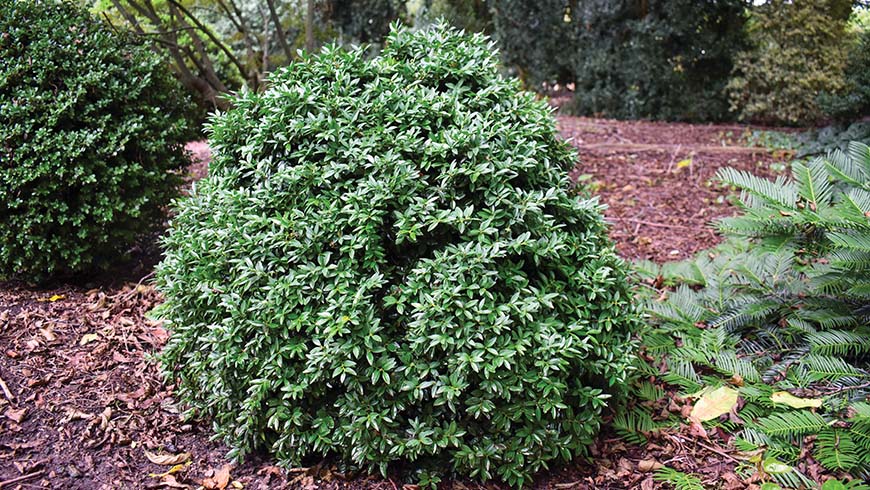
'Emerald Gumdrop' (photograph above) is the name the JCRA gave to a very distinct and attractive boxwood, Buxus sempervirens, which originated from a wild collection from the Republic of Georgia. Its clean foliage is a bright emerald green and its growth habit without any pruning is a broad cone close to being about as tall as wide, 2' by 2'. It's hard to believe that it was planted as a two-gallon plant in 2002. Like all of these introductions, we admired it for years before deciding to name it and introduce it.
Two 2021 JCRA introductions are notable for surviving recent winters, most importantly the record-breaking winter of 2017–2018. They are Fatsia polycarpa 'Jade Dragon' and Rhodoleia championii 'Winter Champion'.
Fatsia japonica is the well-known Japanese aralia that is common in zone 7 and warmer gardens. It is nice enough, but its cousin Fatsia polycarpa goes beyond nice to "wow!" with its large, deeply lobed leaves. It is also larger growing, to about 12' tall. This Taiwanese native is threatened by habitat destruction. I suspect that this gorgeous plant will soon become common in gardens where it is winter hardy and, in time, a plant that is more common in gardens than in the wild.
Rhodoleia championii is known as the Hong Kong rose hazel. Its exquisitely beautiful and intricate flowers belie the fact that it is a witch hazel relative. A skirt of petals, or petal-like bracts, resemble a paper umbrella. They protect numerous floral parts inside. The Arboretum gave this individual the cultivar name of 'Winter Champion' for its winter hardiness. Rhodoleia is also a handsome evergreen small tree or large shrub. It is a magical experience to be able to look up at the flowers once the plant gets tall enough.
The cultivar of the broad-leaved evergreen Chinese fig-hazel, Sycopsis sinensis 'PsyOps' is distinguished by its leaves being very much longer and narrower (roughly 4" by ½") than typical, making for a distinct textural contrast to most other plants. It too is a witch hazel relative.
These are just a few of the plants named and introduced by the JCRA. This certainly is not the end of this story, for it is an ongoing, never-ending one. There are many exciting plants under observation here at the JCRA which might very well prove to be worthy of their own cultivar name. So, stay tuned!
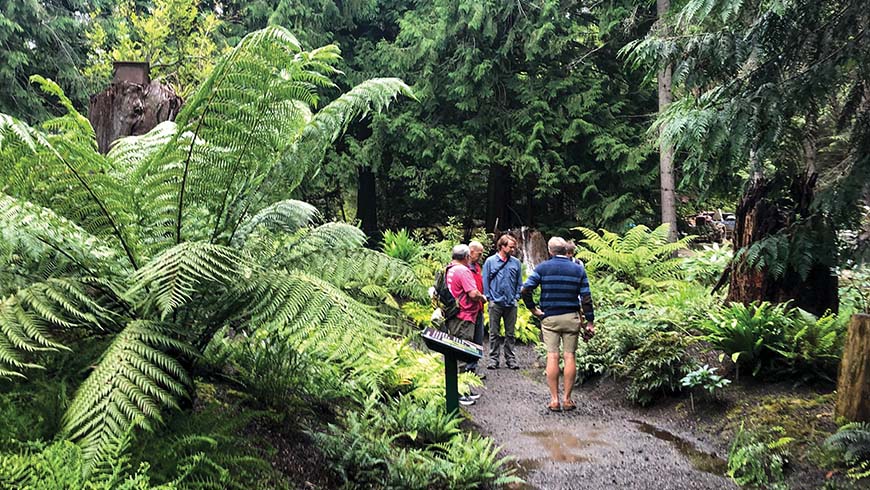
On the Road Again
By Mark Weathington, Director
As someone who travels quite a bit for work (six countries and 16 states in the 24 months prior to COVID-19 shutdowns), I've been itching to get out and see new plants and visit with friends and colleagues. With plant collecting in Asia on hold for the foreseeable future, I rounded up collecting partners Scott McMahan, Ozzie Johnson, and Tim Marchalik for a trip out to visit good friends in the Pacific Northwest and maybe pick up a few plants along the way.
The crowded flight was a bit of a shock to the system, but it got me into SeaTac early enough to rent a large van (I did mention picking up some plants, after all) and get back to pick up the crew from Atlanta. Dan Hinkley, founder and director emeritus of Heronswood, was our guide for the week and he had developed an ambitious itinerary which included Far Reaches Farm, Cistus Design Nursery, Rhododendron Species Botanic Garden, Point Defiance Zoo and Aquarium, the Amazon Spheres, Heronswood, and his personal garden, Windcliff. Oh, and some hiking in the mountains.

The new Heronswood director, Patrick McMillan, a recent transplant from our side of the country at the South Carolina Botanic Garden, met us in the garden to show off the huge, new stumpery which was just starting to grow in with a mind-blowing assortment of woodland plants, many from Dan's collecting trips, including a bunch of the begonias he has collected from India's Arunachal Pradesh. A planted table of smaller perennials which could become lost among the lush garden was especially lovely and certainly got my mental wheels rolling. The mature woodland gardens are always a special place to me, but the gaudy splendor of the sunny parterre garden was at a level with any display garden I've visited from RHS Garden Wisley to Chanticleer to Kirstenbosch National Botanical Garden.
Among my other favorite gardens in the area is the Rhododendron Species Foundation Botanic Garden. Steve Hootman, the director, is my go-to resource for identifying any rhododendrons I collect in the wild. He has been with the garden for decades and his early visions of stands of large-leafed rhodies is coming to fruition now. I visited his stumpery many years ago as it was going in and it was a joy to see it full and thriving—I expect Heronswood's will be just as spectacular in a few years. A side interest of Steve's, which coincides with a new obsession of mine, is for hardy gesneriads. Steve generously shared quite a few of his wild collections with us. We swung by Point Defiance Zoo and Aquarium which was definitely not on my radar, but the horticulture team there is growing some amazing plants. I think there might have been some animals as well, but the gardens alone are worth the visit.
Kelly Dodson and Sue Milliken at Far Reaches Farm welcomed us to the nursery with a tour of the garden including an amazing (and still expanding) crevice garden. I filled a notebook with a wish list as we toured the collections—unfortunately, I lost the notebook on our final evening in Seattle. I think I need to return soon to remedy the situation. Their mail-order nursery offers some of the finest plants from gardens and wild collections available anywhere. The many items tucked away and not yet available are even more tantalizing. After many visits to the nursery, I was still seeing plants that were brand new to me.
In a similar vein, but with a different plant palette, is the wonderful Cistus Design Nursery. Sean Hogan is a long-time friend of the JCRA and, like everyone else on our visit, was generous to the point of embarrassment. We brought back woodland perennials, New Zealand natives, and a whole variety of plants to test for suitability to our colder and much more humid climate. Sean has been advocating for years for more drought tolerant species for Portland area streets. The recent heat dome, which settled over the region bringing 118°F temperatures, was a test of his plant selection and it seems he was 100% correct in his advocacy as his suggestions fared much better than the natives and more common landscape trees being used in the region.

Of course, Dan Hinkley and Robert Jones's garden, Windcliff, was magnificent as always with nodding angel's fishing rods dangling over masses of agapanthus and spiky phormiums. Dan toured us around his collections from over his career, before and after feeding us like kings. Whether it was a thin-leafed Ardisia japonica that he received from J. C., "… a million years ago," or unidentified Styrax species, Dan was unfailingly generous with plants, seed, cuttings, and his time.
We made sure to leave some time for a visit to the Amazon Spheres located in central Seattle where the horticulture team toured us around and treated us to lunch. With 4,000 square feet of green walls and plantings which include a 50' tall Ficus rubiginosa, the Spheres is a conservatory created to be a working space for Amazon employees. While it is not open to the public generally, there are tours available and the plantings around the outside of the huge domes were designed by Dan Hinkley and are some of the best public plantings anywhere.
It was a much-needed week of plant nerdery with my fellow plant lovers which brought me back to the JCRA enthused and energized for new endeavors. As usual, we all were thrilled with new plants and brought quite a few things back with us, including: three species of the viciously spiny Aciphylla—a New Zealand native in the carrot family; the Ardisia japonica from the JCRA Lath House Dan received so long ago plus an Ardisia from Arunachal Pradesh, India; a new Aucuba japonica selected by Sean Hogan; three different (potentially) hardy begonias; a hybrid Bomarea × Alstroemeria; a handful of new gesneriads to try; an amazing Cotoneaster which made a 10' mound loaded with red fruit; an Argentinian strawberry species with yellow fruit; Schefflera trevesioides; and so much more, totaling about 85 new accessions.
Arboretum Update
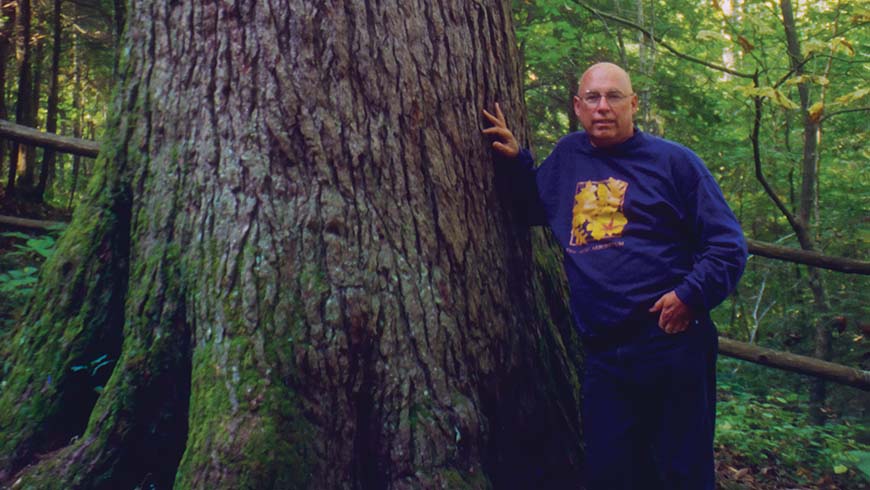
People, Plants, and Pride: The Passions of J. C. Raulston
By David Hunt, University Communications
At his untimely death in 1996, J. C. Raulston was hailed for his role in introducing new varieties of plants to the American landscape. The founder of the NC State University Arboretum that now bears his name was killed instantly in a head-on collision along a rural stretch of U.S. Highway 64 near Asheboro, North Carolina, just days before Christmas.
A Christmas Eve obituary in The New York Times lauded J. C. as "a generous-spirited giant among horticulturists."
Peter Del Tredici, a research scientist at the Arnold Arboretum at Harvard University, called J. C. "a selfless advocate for broadening and improving the selection of horticultural plants," noting that he "distributed quite literally millions of cuttings and seedlings to the nursery industry and botanic gardens."
But the 56-year-old J. C. cultivated more than plants. For the last two decades of his life, the professor of horticulture nurtured a network of LGBTQ people connected by their love of plants as much as their sexual orientation.
For all J. C. did to advance horticulture, says his biographer, Bobby Ward, "his greatest contribution may have been the connections made among gay and lesbian gardeners in the comfortable network he created through the Lavandula and Labiatae Society."
J. C. organized the society in 1978 during the annual conference of the American Society for Horticultural Science in Boston. By 1990, it had nearly 300 members in 34 states. The society's name comes from the Latin words for two types of plants—lavender and mint.
Bobby, who earned both a master's degree and a doctorate in botany and plant physiology at NC State, often attended meetings at J. C.'s home in downtown Raleigh. He says the society connected J. C.'s personal and professional lives and offered a safe place for gays and lesbians to socialize in a less welcoming era.
A Whole New World
"When he came out and had his first [gay] experience in 1975 at age of 35, it was a whole new world for him," Bobby says. "You have to look back at what life and the world was like then. He had to walk a very careful tightrope of being out to those he could trust but not out to people that he didn't think would be accepting of it."
Among friends—and in his writings for LGBTQ professionals and associates in the industry—J. C. was remarkably frank about his personal life. In a 1983 letter to friends, preserved with his papers in the special collections of the NC State University Libraries, J. C. confided that he was having a hard time coming to terms with a failed relationship.
Still, J. C. traveled widely and found time to take in a wide variety of LGBTQ social and political events. He spent a 1981 sabbatical in San Francisco, home to one of the world's most vibrant and active queer communities, enjoying the freewheeling atmosphere that prevailed before the AIDS epidemic.
In a brutally honest critique of the city's gay scene, then largely centered around bars and bathhouses, J. C. told his friends, "Sex was easy—human contact seemed virtually impossible."
Out of "The Green Closet"
Through the Lavandula and Labiatae Society, J. C. created a healthy alternative to the bars and baths—a place where gays and lesbians in horticulture could connect, without compartmentalizing their lives or leaving their identity at the door. He organized meetings and events on the margins of major industry conferences, and hosted regular get-togethers for members in the Triangle.
Occasionally, J. C. would treat members of the society to a presentation titled "The Green Closet," a collection of slides that highlighted gay and lesbian gardeners of note. According to his biographer, Bobby Ward, "This lighthearted slide lecture also included bawdy images from Greek pottery and nude Italian sculptures, as well as photos of scantily clad landscapers and gardeners."
J. C. found love in the summer 1986 when he met a Canadian man, David Sayer, during a trip to Vancouver, British Columbia, to attend the Expo '86 World's Fair. By the fall of that year, the two men were living together in a small house near the NC State campus while they renovated an abandoned warehouse in downtown Raleigh.
Tragically, David died of complications of AIDS on May 5, 1990, at the age of 34.
After David's death, J. C. took comfort in opening the 4,000 square foot home on Davie Street to friends and colleagues, including members of the Lavandula and Labiatae Society. "It was an extraordinary house and unique design," Bobby says. "The house afforded great occasions for entertaining, organizing Arboretum fundraising parties, hosting overnight guests from around the world, and allowing students to connect outside the classroom with noted horticulturists, opportunities few other NC State horticultural faculty members provided."
J. C. Raulston Remembered
Thankfully, in the years since his death, J. C.'s contributions to NC State and to horticultural science have not been forgotten. A 2016 exhibit in the D. H. Hill Jr. Library gallery celebrated J. C.'s life and work, from his childhood in Oklahoma to his two decades of service to the university as an educator, horticulturist, and Arboretum director.

The exhibit, designed by Molly Renda, included a panel on J. C.'s founding of the Lavandula and Labiatae Society and his efforts to support LGBTQ professionals in horticulture.
In a changing landscape, J. C.'s passion for his work and his spirit of generosity live on—in the work of the JC Raulston Arboretum, in the lives and contributions of his former students and colleagues, and in a more welcoming environment for LGBTQ people at NC State and beyond.
The New York Times summed up J. C.'s legacy in his 1996 obituary this way: He "leaves no survivors—except for his hundreds of friends, and millions of plants."
J. C. penned a shorter version, ending many of his letters by urging readers to take up his cause: "Plan—and plant for a better world."
Membership
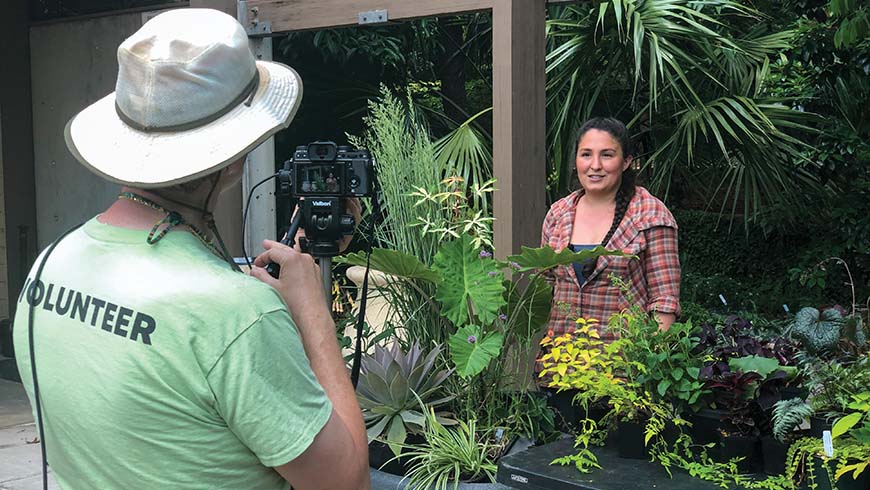
Members from Afar
By Kathryn Wall, Membership and Volunteer Coordinator
Do you fit the profile for the average member of the Arboretum? Are you someone that is
- crazy about plants,
- cares about the environment,
- loves the beauty and diversity of the gardens,
- loves learning about plants,
- loves to photograph plants and wildlife,
- lives near Raleigh, or
- has a connection to NC State University or J. C. Raulston?
Our rock-solid plant community had these characteristics in 1976, but 45 years later, and months into a pandemic, there's been a new development. Because of moving so many programs online, our reach has expanded and members now come from more zip codes than ever. Many of our new members have never set foot in our physical garden. However, our plant knowledge and online programming are bringing in plant people from all over.
As folks were learning how to use Zoom in spring 2020 and looking for something to do besides baking sourdough bread, what we thought was a temporary, short-term online program, drew a bunch of new people including
- Sally from Oregon,
- Paul from the North Carolina coast,
- Linda from western North Carolina who drove three hours each way to pick up plants from the 2020 giveaway, and
- Master Gardeners from so many N.C. counties we lost track!
Eric, a new member, wrote, "Just want to say that I'm signing up for membership in large part due to the YouTube channel that you all maintain. It has been a real godsend since the pandemic began; I've watched at least one video every morning and have learned so much about plants and gardening. Kudos on having an engaging and unique channel!"
New member Scott from New York, New York, invited us to take part in the Metro Hort Group Plant-O-Rama virtual trade show. New York City is closer to us on the plant hardiness map than the road atlas, and we found all types of connections to current and previous staff, interns, and all types of folks in the horticulture world as we hosted our virtual trade show booth. In August, Scott presented a Friends of the Arboretum Lecture with his gardening partner, Daryl, about gardening in New York City (catch the presentation on YouTube).
Forty-five years ago, our mission was rooted in the introduction of new landscape plants. Today homeowners, plant nuts, and horticultural professionals, no matter where they call home, can benefit from our plant knowledge, online programming, our Choice Plants and introductions, the Southeastern Plant Symposium, and other educational resources like our photography collection and YouTube channel. Membership makes a difference and we're sure glad you're here.
Volunteering
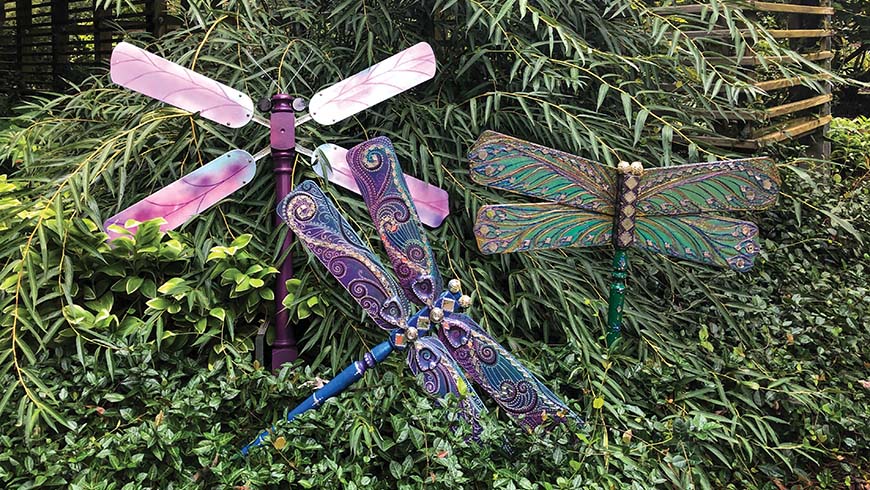
Fans of JCRA, Come Take a Spin
By Kathryn Wall, Membership and Volunteer Coordinator
Arboretum volunteers do more than dig in the dirt and move mulch. In fact, we have many talented artists, both professional and amateur, who share their talents with us. Through our Ephemeral Art Committee, volunteers have freedom and creativity to come up with short-lived installations to add a bit of whimsy and delight around the garden. This autumn, Fantasia is on view throughout the Arboretum grounds with over a dozen unique "spins" on upcycling the generic ceiling fan.
The brainchild of Beth Jimenez and Amelia Lane, the Fantasia project began in early 2020, just before the pandemic. The timing worked well because the project gave focus and purpose to days stuck in lockdown. Used ceiling fans were donated and volunteers began designing and painting their fans.
Each Design Is As Unique As the Artist
Getting the fans ready to "spin" took a lot of work. Every fan had unique hardware, which was a challenge! Committee member and artist Carol Williams enlisted her husband, William, a woodworker and former Raleigh firefighter, to get the fans ready to twirl. It will be exciting to see them in the garden.
The Fantasia fans were installed in early September and will be on display for a short period, depending on how the fans hold up in the elements. The individual pieces will be displayed throughout the garden and are not for sale.
Artists and Title of Fan Art
The following volunteers created fan-based art for display throughout the Arboretum:
Carol Williams, Colorful Wind
Laurie Cochran, Sea-zen
Mary Jo Stephenson, Fan Flower and Blue and Green Dragonfly
Mitzi Hole, Night Life
Becky Glass, Twirling Peacocks
Beth Jimenez and Amelia Lane, Bountiful Bugs
Christa Burns, Fan Gogh
Kathryn Wall, Modish Butterfly and Grandmother's Button Jar
Prudence Smartwood, Fourth Sister
Sue Aldworth, At the Water's Edge
Joyce Moses, B is for…?
Virginia Mullinax, Jendoodles
Sandy Debrowski, Purple Dragon Fly
